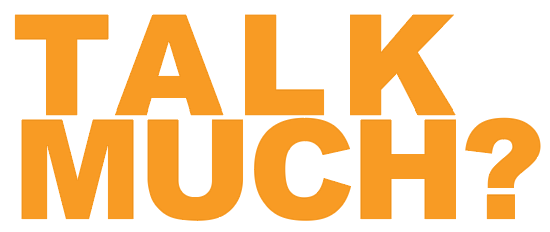The company was started in John Warnock’s garage. The name of the company, Adobe, comes from Adobe Creek in Los Altos, California, which ran behind Warnock’s house. Adobe’s corporate logo features a stylized “A” and was designed by Marva Warnock, graphic designer and John Warnock’s wife.
Steve Jobs asked to buy the company for five million dollars in 1982, but Warnock and Geschke refused. Their investors urged them to work something out with Jobs, so they agreed to sell him shares worth 19 percent of the company, for which Jobs paid a five-times multiple of their company’s valuation at the time, plus a five-year license fee for PostScript, in advance. The purchase and advance made Adobe the first company in the history of Silicon Valley to become profitable in its first year.
Warnock and Geschke considered various business options including a copy-service business and a turnkey system for office printing. Then they chose to focus on developing specialized printing software and created the Adobe PostScript page description language.
PostScript was the first truly international standard for computer printing as it included algorithms describing the letter-forms of many languages. Adobe added kanji printer products in 1988. Warnock and Geschke were also able to bolster the credibility of Postscript by connecting with a typesetting manufacturer. They weren’t able to work with Compugraphic, but then worked with Linotype to license the Helvetica and Times Roman fonts (through the Linotron 100). By 1987, PostScript had become the industry-standard printer language with more than 400 third-party software programs and licensing agreements with 19 printer companies.
Warnock described the language as “extensible”, in its ability to apply graphic arts standards to office printing.
Adobe’s first products after PostScript were digital fonts, which they released in a proprietary format called Type 1. Apple subsequently developed a competing standard, TrueType, which provided full scalability and precise control of the pixel pattern created by the font’s outlines, and licensed it to Microsoft.
In the mid-1980s, Adobe entered the consumer software market with Illustrator, a vector-based drawing program for the Apple Macintosh. Illustrator, which grew from the firm’s in-house font-development software, helped popularize PostScript-enabled laser printers.
Adobe entered NASDAQ in August 1986. Its revenue has grown from roughly $1 billion in 1999 to $4 billion in 2012. Adobe’s fiscal years run from December to November. For example, the 2007 fiscal year ended on November 30, 2007.
In 1989, Adobe introduced what was to become its flagship product, a graphics editing program for the Macintosh called Photoshop. Stable and full-featured, Photoshop 1.0 was ably marketed by Adobe and soon dominated the market.
In 1993, Adobe introduced PDF, the Portable Document Format, and its Adobe Acrobat and Reader software. PDF is now an International Standard: ISO 32000-1:2008.
In December 1991, Adobe released Adobe Premiere, which Adobe rebranded as Adobe Premiere Pro in 2003. In 1992, Adobe acquired OCR Systems, Inc. In 1994, Adobe acquired Aldus and added PageMaker and After Effects to its product line later in the year; it also controls the TIFF file format. In the same year, Adobe acquired LaserTools Corp and Compution Inc. In 1995, Adobe added FrameMaker, the long-document DTP application, to its product line after Adobe acquired Frame Technology Corp. In 1996, Adobe Inc added Ares Software Corp. In 2002, Adobe acquired Canadian company Accelio (also known as JetForm).
On December 12, 2005, Adobe acquired its main rival, Macromedia, in a stock swap valued at about $3.4 billion, adding ColdFusion, Contribute, Captivate, Adobe Connect (formerly Macromedia Breeze), Director, Dreamweaver, Fireworks, Flash, FlashPaper, Flex, FreeHand, HomeSite, JRun, Presenter, and Authorware to Adobe’s product line.
Adobe released Adobe Media Player in April 2008. On April 27, Adobe discontinued development and sales of its older HTML/web development software, GoLive in favor of Dreamweaver. Adobe offered a discount on Dreamweaver for GoLive users and supports those who still use GoLive with online tutorials and migration assistance. On June 1, Adobe launched Acrobat.com, a series of web applications geared for collaborative work. Creative Suite 4, which includes Design, Web, Production Premium, and Master Collection came out in October 2008 in six configurations at prices from about US$1,700 to $2,500 or by individual application. The Windows version of Photoshop includes 64-bit processing. On December 3, 2008, Adobe laid off 600 of its employees (8% of the worldwide staff) citing the weak economic environment.
On November 10, 2009, the company laid off a further 680 employees. Adobe announced it was investigating a “coordinated attack” against corporate network systems in China, managed by the company.
Adobe’s 2010 was marked by continuing front-and-back arguments with Apple over the latter’s non-support for Adobe Flash on its iPhone, iPad and other products. Former Apple CEO Steve Jobs claimed that Flash was not reliable or secure enough, while Adobe executives have argued that Apple wish to maintain control over the iOS platform. In April 2010, Steve Jobs published a post titled “Thoughts on Flash” where he outlined his thoughts on Flash and the rise of HTML 5. In July 2010, Adobe bought Day Software integrating their line of CQ Products: WCM, DAM, SOCO, and Mobile
In January 2011, Adobe acquired DemDex, Inc. with the intent of adding DemDex’s audience-optimization software to its online marketing suite. At Photoshop World 2011, Adobe unveiled a new mobile photo service. Carousel is a new application for iPhone, iPad, and Mac that uses Photoshop Lightroom technology for users to adjust and fine-tune images on all platforms. Carousel will also allow users to automatically sync, share and browse photos. The service was later renamed to “Adobe Revel”.
In October 2011, Adobe acquired Nitobi Software, the makers of the mobile application development framework PhoneGap. As part of the acquisition, the source code of PhoneGap was submitted to the Apache Foundation, where it became Apache Cordova.
On November 9, 2011, Adobe announced that they would cease development of Flash for mobile devices following version 11.1. Instead, it would focus on HTML 5 for mobile devices. On December 1, 2011, Adobe announced that it entered into a definitive agreement to acquire privately held Efficient Frontier.
In December 2012, Adobe opened a new 280,000 square foot corporate campus in Lehi, Utah.
In 2013, Adobe Systems endured a major security breach. Vast portions of the source code for the company’s software were stolen and posted online[44] and over 150 million records of Adobe’s customers have been made readily available for download. In 2012, about 40 million sets of payment card information were compromised by a hack of Adobe.
A class-action lawsuit alleging that the company suppressed employee compensation was filed against Adobe, and three other Silicon Valley-based companies in a California federal district court in 2013. In May 2014, it was revealed the four companies, Adobe, Apple, Google, and Intel had reached agreement with the plaintiffs, 64,000 employees of the four companies, to pay a sum of $324.5 million to settle the suit.
On Wednesday, March 28, 2018, at Adobe Summit, Adobe, and NVIDIA publicized a key association to quickly upgrade their industry-driving AI and profound learning innovations. Expanding on years of coordinated effort, the organizations will work to streamline the Adobe Sensei AI and machine learning structure for NVIDIA GPUs. The joint effort will speed time to showcase and enhance the execution of new Sensei-powered services for Adobe Creative Cloud and Experience Cloud clients and engineers.
Adobe and NVIDIA have co-operated for over 10 years on empowering GPU quickening for a wide arrangement of Adobe’s creative and computerized encounter items. This incorporates Sensei-powered features, for example, auto lip sync in Adobe Character Animator CC and face aware editing in Photoshop CC, and also cloud-based AI/ML items and features, for example, picture investigation for Adobe Stock and Lightroom CC and auto-labeling in Adobe Experience Supervisor.
On May 22, 2018, Adobe stated that they are buying e-commerce services provider Magento Commerce from private equity firm Permira for $1.68 billion. This deal will help bolster its Experience Cloud business, which provides services including analytics, advertising, and marketing. The deal is expected to close during Adobe’s fiscal third quarter in 2018.
On September 20, 2018, Adobe announced its acquisition of marketing automation software company, Marketo.
On October 3, 2018, Adobe officially changed its name from Adobe Systems Incorporated to Adobe Inc.
On January 23, 2019, Adobe announced its acquisition of a 3D texturing company, Allegorithmic.





